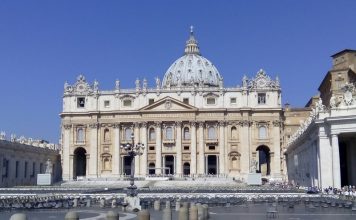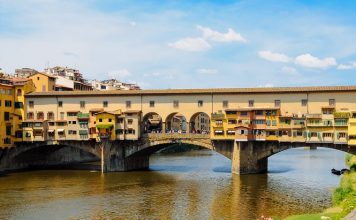Crete is the largest and most populous island in Greece, famous for its ancient civilization, diverse landscape, and rich culture. Crete is one of the most visited destinations in Greece and Europe, attracting millions of tourists every year.
What is Crete Known For?
Crete is famous for many things, such as:
- Its Minoan history and culture. Crete was the home of the Minoans, one of the oldest and most advanced civilizations in Europe, who flourished from 2700 to 1450 BC. The Minoans left behind impressive palaces, temples, frescoes, pottery, and jewelry that reveal their artistic and technological achievements. Some of the most famous sites are Knossos, Phaistos, Malia, and Zakros.
- Its natural beauty and diversity. Crete has a varied and stunning landscape that includes mountains, gorges, caves, lakes, rivers, forests, plains, and beaches. Crete has some of the highest peaks in Greece, such as Mount Ida and Mount Dikti, which are covered with snow in winter. Crete also has some of the most spectacular gorges in Europe, such as Samaria Gorge and Imbros Gorge, which are ideal for hiking and trekking. Crete also has some of the most beautiful beaches in the Mediterranean, such as Balos Lagoon, Elafonisi Beach, Vai Beach, and Preveli Beach.
- Its cuisine and lifestyle. Crete has a delicious and healthy cuisine that reflects its Mediterranean climate and traditions. Crete is famous for its olive oil, cheese, honey, wine, herbs, and seafood. Some of the most typical dishes are dakos (barley rusk topped with tomato, cheese, and oregano), kalitsounia (cheese pies), snails (cooked with vinegar or tomato sauce), gamopilafo (rice cooked with meat broth), and loukoumades (honey doughnuts). Crete also has a vibrant and hospitable lifestyle that is influenced by its history and culture. Crete is famous for its music, dance, festivals, and customs.
Famous Drinks in Crete
Crete has some famous drinks that are worth trying along with its food. Some of them are:
- Raki: This is a strong alcoholic drink made from distilled grape pomace that is produced in Crete and other regions of Greece. It has a clear color and a fiery taste. It can be drunk plain or flavored with honey or herbs. It is usually served in small glasses or shots after a meal or as a welcome drink.
- Wine: Crete has a long tradition of wine-making that dates back to ancient times. The island produces mainly white wines from local grape varieties such as Vilana, Vidiano, Thrapsathiri, and Plyto. The wines have a light color and a fruity aroma. They are usually served chilled in large glasses or carafes with food or snacks.
- Coffee: Crete has a strong coffee culture that is similar to other parts of Greece and the Middle East. The most common coffee drink is Greek coffee (also known as Turkish coffee), which is made from finely ground coffee beans that are boiled with water and sugar in a small pot called briki. It has a thick layer of foam on top and a layer of sediment at the bottom. It is usually served in small cups with a glass of water and a sweet treat.
- Tea: Crete also has a variety of herbal teas that are made from plants that grow on the island or in the nearby mountains. Some of the most common herbs used for tea are: sage (faskomilo), thyme (thimari), oregano (rigani), mint (dyosmos), chamomile (hamomili), linden (tilio), rosemary (dendrolivano), lavender (lavanta), lemon balm (melissa), mountain tea (tsai tou vounou), and dittany (diktamo). These teas have various health benefits and soothing effects.
Famous Sports in Crete
Crete is an ideal place for sports lovers, as it offers many opportunities for fun and adventure on land and sea. Some of the most popular sports in Crete are:
- Water sports: Crete has many beaches and bays that are perfect for water sports such as jet skiing, parasailing, windsurfing, kite surfing, scuba diving, snorkeling, sailing, kayaking, stand up paddle boarding, and fishing. You can rent equipment or join tours to explore the coast and the nearby islands.
- Hiking: Crete has many trails and paths that lead to scenic spots and hidden gems on the island. You can hike to the peaks of the mountains, the depths of the gorges, the entrances of the caves, or the outskirts of the villages, enjoying the nature and the history of the island. Some of the best hiking routes in Crete are: E4 European Path, which crosses the island from east to west; Samaria Gorge, which is the longest and most famous gorge in Europe; Zaros Lake, which is a beautiful and tranquil lake surrounded by forest; and Lassithi Plateau, which is a fertile and picturesque plain with windmills and orchards.
- Cycling: Crete is also a great place for cycling, as it has many roads and tracks that offer different levels of difficulty and scenery. You can cycle around the coast, the plains, the hills, or the fields, admiring the landscape and the culture of the island. You can also join tours or events to see more of the island or meet new people. Some of the best cycling routes in Crete are: Heraklion-Agios Nikolaos-Sitia, which follows the north coast of the island; Rethymno-Chania, which passes through the old towns and the countryside; and Anogia-Zoniana-Axos, which explores the traditional villages and the rural life.
Famous Streets in Crete
Crete has many streets that are worth exploring for their charm, atmosphere, and history. Some of the most famous streets in Crete are:
- 25th August Street: This is the main street in Heraklion, the capital and largest city of Crete. It is a wide and elegant avenue that connects the port with the city center. It has many historical buildings such as the Venetian Loggia, the Basilica of St. Mark, and the Morosini Fountain. It also has many shops, cafes, restaurants, and hotels.
- Halidon Street: This is the main street in Chania, the second-largest city and former capital of Crete. It is a narrow and winding street that runs from the old port to the Cathedral of Chania. It has many Venetian and Ottoman buildings that reflect its rich heritage. It also has many boutiques, galleries, taverns, and bars.
- Ethnikis Antistaseos Street: This is the main street in Rethymno, the third-largest city and one of the best-preserved medieval towns in Crete. It is a long and busy street that runs from the old town to the new town. It has many neoclassical buildings that date back to the 19th century. It also has many shops, cinemas, theatres, and hotels.
- Eleftheriou Venizelou Street: This is the main street in Agios Nikolaos, a picturesque town and a popular tourist resort in eastern Crete. It is a coastal road that follows the curve of the bay of Mirabello. It has many palm trees, flowers, and benches that create a pleasant atmosphere. It also has many cafes, restaurants, bars, and clubs that offer views of the sea and the sunset.
FAQs about Crete
Here are some frequently asked questions about Crete:
- How do I get to Crete? You can get to Crete by plane from Athens or other European cities; by ferry from Piraeus or other islands; or by cruise ship from various ports.
- When is the best time to visit Crete? The best time to visit Crete is from April to October, when the weather is warm and sunny, the sea is calm and clear, and the island is lively and festive. However, avoid July and August, when the island is crowded and prices are high.
- What are some things to do in Crete? Some of the things to do in Crete are: visit the Minoan palaces and museums; enjoy the beaches and water sports; explore the nature and wildlife of the island; taste the cuisine and drinks of the island; join a tour or a cruise to see more of the island or nearby islands.
See more Famous Places in Greece:
- What is Messolonghi Famous For?
- What is Kefalonia Famous For?
- What is Sifnos Famous For?
- What is Peloponnese Famous For?
- What is Zakynthos Famous For?
- What is Nafplio Famous For?
- What is Halkidiki Famous For?
- What is Rhodes Famous For?
- What is Kalamata Famous For?
- What is Katoria Famous For?
- What is Crete Famous For?
- What is Ioannina Famous For?
- What is Kavala Famous For?
- What is Kos Famous For?
- What is Naxos Famous For?
- What is Paros Famous For?
- What is Mykonos Famous For?
- What is Meteora Famous For?
- What is Salamanca Famous For?
- What is Santorini Famous For?
- What is Corfu Famous For?
- What is Athens Famous For?
- What is Thessaloniki Famous For?













